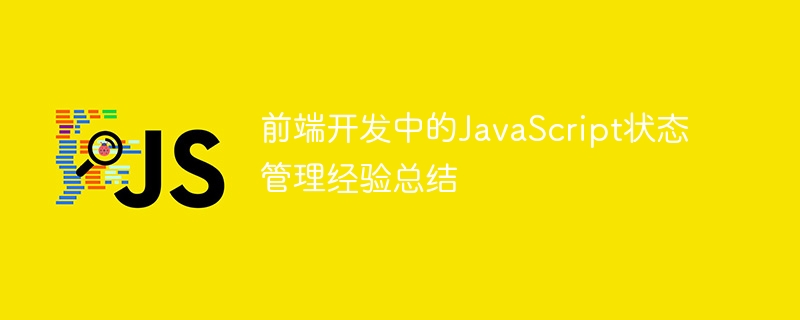
Experience summary of JavaScript state management in front-end development
In modern web application development, JavaScript has always been an important tool for front-end developers. As application complexity increases, JavaScript state management becomes increasingly important. This article will summarize some JavaScript state management experiences and best practices to help front-end developers better manage and maintain the state of applications.
- Use a single data source: In JavaScript state management, using a single data source is an important principle. This means that the state of the application should be stored in one place, rather than scattered among various components. This ensures state consistency and facilitates state management and maintenance.
- Use state management library: Using a mature state management library can greatly simplify the work of state management. Currently popular state management libraries include Redux, Mobx, and Vuex. These libraries provide unified state management methods and APIs to help developers manage and update state more efficiently.
- Divide state modules: For large applications, the state may be very large, and it is a good practice to divide it into multiple modules. Each module can manage specific status, such as user information, shopping cart, orders, etc. This makes state management clearer and more maintainable.
- Use pure functions for state updates: When updating the state, using pure functions can avoid side effects and unpredictability of the state. Pure functions receive the current state and action as parameters and return a new state. This ensures that state changes are trackable and recoverable, and facilitates debugging and testing.
- Handling of asynchronous operations: In modern web applications, asynchronous operations are inevitable. For example, load data from the server or send a request. When dealing with asynchronous operations, you can use middleware to handle asynchronous logic. State management libraries usually provide middleware support to easily handle asynchronous operations.
- Using the state subscription and observation pattern: The state subscription and observation pattern is a commonly used application architecture pattern. It enables communication and coordination between components by allowing them to subscribe to and observe state changes. This pattern can effectively reduce coupling between components and improve application scalability.
- Debugging and performance optimization: In the development process, debugging and performance optimization are an important link. Debugging tools and performance analysis tools can help developers locate and solve problems. For example, Redux DevTools is a commonly used debugging tool that can track and play back state changes. Performance optimization can be achieved by using caching and optimizing state update logic.
In summary: JavaScript state management plays a vital role in modern web applications. You can better manage and maintain the state of your application by using a single data source, a state management library, partitioning state modules, using pure functions for state updates, handling asynchronous operations, using state subscription and observation patterns, and debugging and performance optimization. Hopefully these experiences and best practices will be helpful to front-end developers when it comes to JavaScript state management.
The above is the detailed content of Summary of experience in JavaScript state management in front-end development. For more information, please follow other related articles on the PHP Chinese website!


